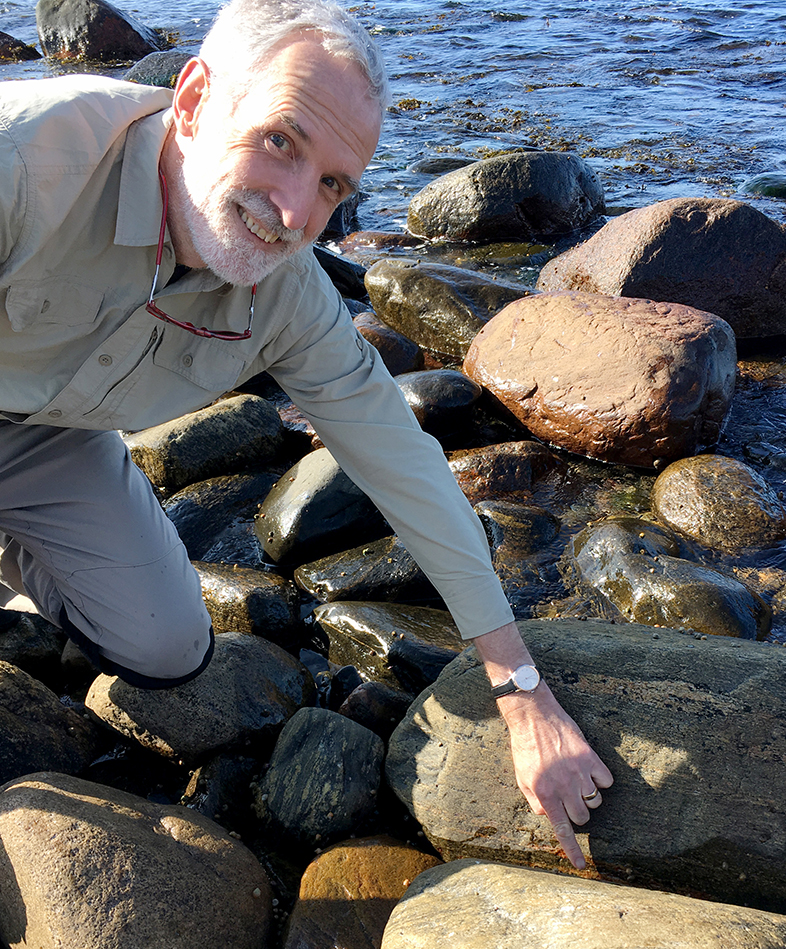– The society has become like an “academic home” to me, and it is very nice to be recognized by the people I know and respect, comments a happy Professor Butlin.
 Roger Butlin is professor at the University of Sheffield but since 2013 he has also been affiliated to the University of Gothenburg. He is a world-leading scientist in the field of evolutionary biology with special interest in speciation. During his career, he has worked with several model organisms including e.g. grasshoppers, rotifers, fruit flies and aphids.
Roger Butlin is professor at the University of Sheffield but since 2013 he has also been affiliated to the University of Gothenburg. He is a world-leading scientist in the field of evolutionary biology with special interest in speciation. During his career, he has worked with several model organisms including e.g. grasshoppers, rotifers, fruit flies and aphids.
About ten years ago, Professor Butlin joined the Centre for Marine Evolutionary Biology – CeMEB, coordinated by Professor Kerstin Johannesson. Since then, the small marine snail Littorina saxatilis has been included in his model family.
– Nowadays, Kerstin and I operate the Littorina-group as one big project with funding from both the Swedish and European Research Councils, as well as the UK Natural Environment Research Council, says Professor Butlin. Compared with many people in the field I am unusual in having worked on all kinds of different systems, and that’s been a lot of fun!
Today, the Littorina-group involves about 16 researchers, students, technicians and assistants. Several of them are stationed at Tjärnö Marine Laboratory, and Professor Butlin regularly comes to Tjärnö for field work or whenever input is needed.
– I very much enjoy working at Tjärnö. The facilities are wonderful, and we are right in the study sites, explains Professor Butlin.
The Littorina-snails live on rocky sea shores along the west coast, and are found in two genetically distinct ecotypes with physical adaptations to the environmental conditions of either of two habitats. This makes the snails very well suited for studying processes leading to speciation. During his recent field period, Roger Butlin, Kerstin Johannesson and the Littorina-team studied behaviour and survival of snails that have been labelled and transplanted between habitats.
Will you bring back any special moment from this field session?
– Finding snail number 48! It was marked in April 2018 so it had been in the field for 18 months, which is the longest time so far. It is remarkable!
Why is research on evolutionary biology important to society?
– There are lots of reasons why we should have a better understanding of evolutionary biology in a practical sense, says Professor Butlin. Evolutionary medicine being a very obvious one, for example trying to understand antibiotic resistance and cancer development. Then there is this very widespread interest –rightly - in where we come from, and it helps us understand many things about the world including the human condition.
Footnote
The European Society for Evolutionary Biology – ESEB – is an academic society that brings together more than 2 000 researchers, teachers, students, as well as journalists and others interested in evolution. ESEB publishes two highly ranked journals on evolution, organizes a biannual congress and supports many other activities to promote a scientific view of organic evolution.
Read more here at The European Society for Evolutionary Biology website
Text: Susanne Liljenström
Photo:
Professor Roger Butlin just found snail nr 48 in the fieldstudy at Tjärnö marine laboratory. Photo: Kerstin Johannesson.
 Roger Butlin is professor at the University of Sheffield but since 2013 he has also been affiliated to the University of Gothenburg. He is a world-leading scientist in the field of evolutionary biology with special interest in speciation. During his career, he has worked with several model organisms including e.g. grasshoppers, rotifers, fruit flies and aphids.
Roger Butlin is professor at the University of Sheffield but since 2013 he has also been affiliated to the University of Gothenburg. He is a world-leading scientist in the field of evolutionary biology with special interest in speciation. During his career, he has worked with several model organisms including e.g. grasshoppers, rotifers, fruit flies and aphids.